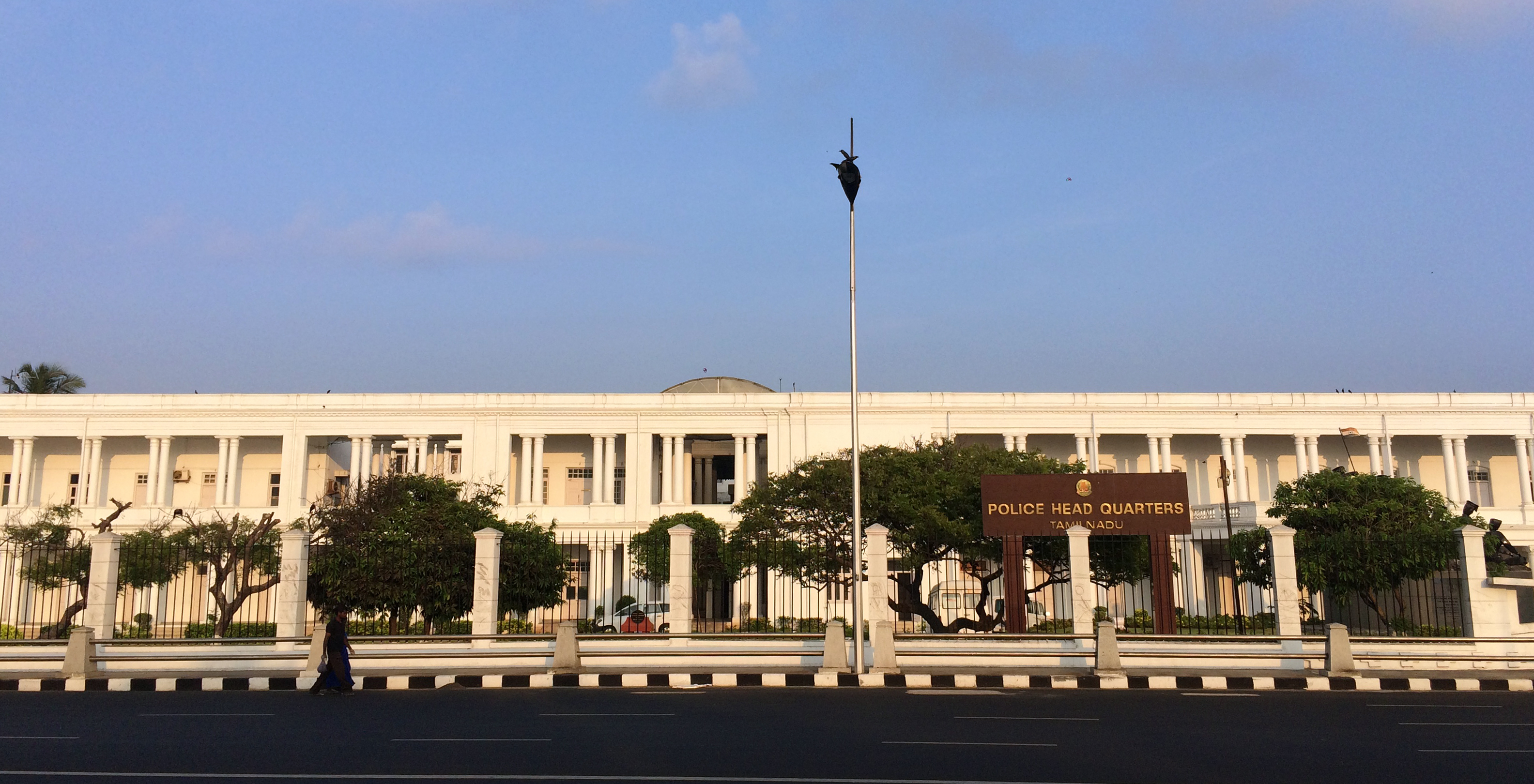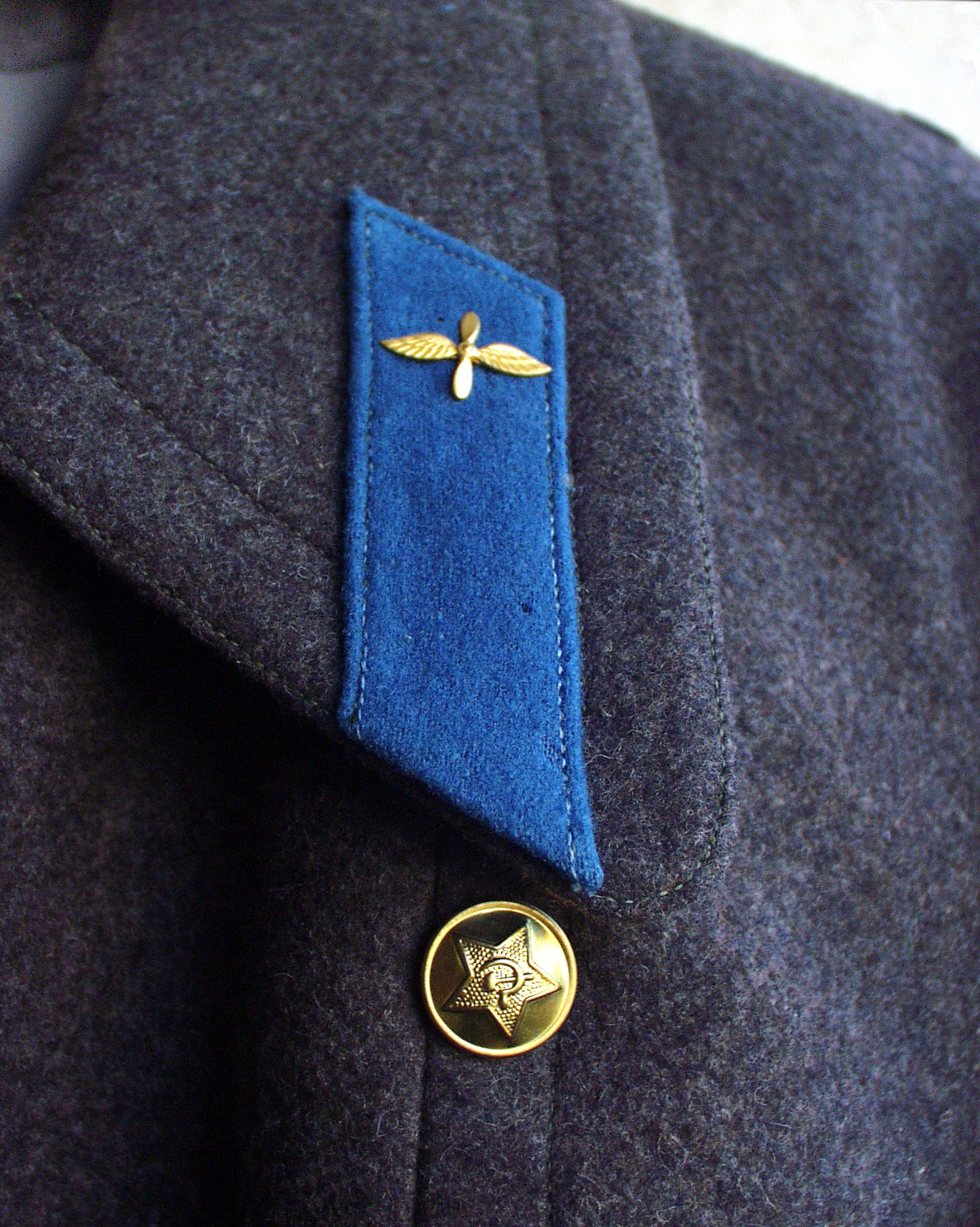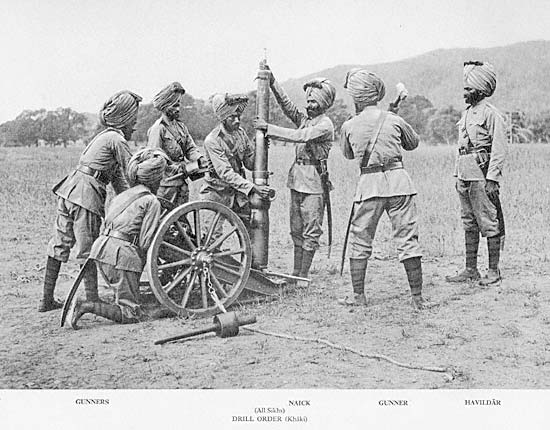|
Director General Of The Indian Coast Guard
The Director General of the Indian Coast Guard (DG ICG) is the head of the Indian Coast Guard. The DG ICG has their office in the Coast Guard Headquarters (CGHQ) in New Delhi. Appointed by the Government of India, the DG ICG reports to the Minister of Defence. The Director General is assisted by four Deputy Directors General, each holding the rank of inspector-general, and other senior officers heading various staff divisions. The Additional Director General of the ICG serves as the second-in-command to the Director General. The post of Director General of the Indian Coast Guard is held by a three-star rank holder as a position and is not a rank in itself. It is equivalent to Vice Admiral of the Indian Navy, Lieutenant General of the Indian Army, Air Marshal of the Indian Air Force, and the Director General of Central Armed Police Forces/State Police Forces. The rank of Additional Director General of the Indian Coast Guard is equivalent to that of a Lieutenant General of the In ... [...More Info...] [...Related Items...] OR: [Wikipedia] [Google] [Baidu] [Amazon] |
Indian Coast Guard
The Indian Coast Guard (ICG) is a maritime law enforcement and search and rescue agency of India with jurisdiction over its territorial waters including its contiguous zone and Exclusive economic zone of India, exclusive economic zone. It was started on 1 February 1977 and formally established on 18 August 1978 by the ''Coast Guard Act, 1978'' of the Parliament of India. It operates under the Ministry of Defence (India), Ministry of Defence. The ICG works in close cooperation with the Indian Navy, the Ministry of Fisheries, Animal Husbandry and Dairying, Department of Fisheries, the Ministry of Finance (India), Department of Revenue (Customs), and the Coastal Police of the Police forces of the states and union territories of India, State Police Forces, and the Central Armed Police Forces. History The establishment of the Indian Coast Guard was first proposed by the Indian Navy to provide non-military maritime services to the nation. In the 1960s, sea-borne smuggling of goods was ... [...More Info...] [...Related Items...] OR: [Wikipedia] [Google] [Baidu] [Amazon] |
Police Forces Of The States And Union Territories Of India
In India, the police forces of the states and union territories are responsible for law enforcement in the States and union territories of India, states and union territories. Police and Public Order are State subjects under the Seventh Schedule to the Constitution of India, Seventh Schedule to the Constitution of India. History The Police Act of 1861 established the principles of organization for police forces in India and, with minor modifications, continues in effect. Although state police forces are separate and may differ in quality of equipment and resources, their patterns of organization and operation are similar. Organisation State Police Force Authority over a State Police Force is held by the State's Home Department, led by a Chief secretary (India), chief or Principal Secretary (India), principal secretary (generally an Indian Administrative Service officer). Each state has a state police force (headed by a director general of police, an Indian Police Service offi ... [...More Info...] [...Related Items...] OR: [Wikipedia] [Google] [Baidu] [Amazon] |
Rameshwar Singh (vice Admiral)
Rameshwar Singh Thakur (16 January 1860 – 3 July 1929) was the maharaja of Darbhanga in the Mithila region from 1898 to his death. He became maharaja on the death of his elder brother Lakshmeshwar Singh, who died without issue. He was appointed to the Indian Civil Service in 1878, serving as assistant magistrate successively at Darbhanga, Chhapra, and Bhagalpur. He was exempted from attendance at the Civil Courts and was appointed a Member of the Bengal Legislative Council in 1885. He was the first Indian appointed to the lieutenant governor's Executive Council. He was a member of the Council of India of the governor general of India in 1899 and on 21 September 1904 was appointed a non-officiating member representing the Bengal Provinces, along with Gopal Krishna Gokhale from Bombay Province. He was president of the Bihar Landholder's Association, president of the All India Landholder's Association, president of Bharat Dharma Mahamandal, a member of the Council of State, ... [...More Info...] [...Related Items...] OR: [Wikipedia] [Google] [Baidu] [Amazon] |
John Colin De Silva
Vice Admiral John Colin De Silva, PVSM, AVSM (18 September 1943 – 20 November 2019) was a flag officer in the Indian Navy. He last served as the Vice Chief of the Naval Staff (VCNS) from 2001 to 2002. He also served as the 11th Director General of the Indian Coast Guard, which he led from 1999 to 2001. He was the commissioning commanding officer of the Rajput-class guided-missile destroyer . After retiring from the Navy, he served as Chairman of the Executive Committee of the Overseas Employment Agency, an agency set up by the Government of Goa. Early life and education De Silva was born on 18 September 1943. He completed his education in Belgaum, attending the St. Paul's School, Belgaum and R. L. Science Institute. He entered the National Defence Academy in July 1960. Naval career Early career De Silva was commissioned into the Indian Navy on 1 January 1965. After a few sea tenures, he opted to specialise in gunnery and attended the Long G course. After the completio ... [...More Info...] [...Related Items...] OR: [Wikipedia] [Google] [Baidu] [Amazon] |
Swaraj Parkash
Vice Admiral Swaraj Parkash, PVSM, MVC, AVSM (3 September 1923 – 20 January 2004) was a Flag officer in the Indian Navy. He was the Captain of the aircraft carrier during the Indo-Pakistani War of 1971 for which he was decorated with India's second-highest military decoration, the Maha Vir Chakra. He later served as the second Director General of the Indian Coast Guard from 1980 to 1982. Early life Parkash was born on 3 September 1923 to Pandit Milkhi Ram in Jalandhar Cantonment in the Punjab Province. He joined the Royal Indian Naval Reserve in December 1942 as a Midshipman. Naval career Early career As a midshipman, he served on the auxiliary patrol vessel ''HMIS Laxmi''. Parkash was commissioned as an acting Sub-lieutenant on 3 September 1943. He then served on another auxiliary patrol vessel ''HMIS St. Antony''. Towards the end of the war, in 1945, he commanded the Basset-class trawler ''HMIS Travancore''. Post-Independence In 1949, he was selected to attend the ... [...More Info...] [...Related Items...] OR: [Wikipedia] [Google] [Baidu] [Amazon] |
Reefer Jacket
A pea coat is an outer coat, generally of a navy-coloured heavy wool, originally worn by sailors of European and later American navies. Pea coats are characterized by short length, broad lapels, double-breasted fronts, often large wooden, metal or plastic buttons, three or four in two rows, and vertical or slash pockets. References to the pea jacket appear in American newspapers at least as early as the 1720s, and modern renditions still maintain the original design and composition. A reefer jacket is an officer's or chief petty officer's pea coat, with the same design but bearing gold buttons and epaulettes. A bridge coat is a reefer jacket which extends to the thighs, giving greater protection to an officer who does not need agility to climb the rigging. Terminology It may also be called a peacoat, pea jacket, or pilot jacket. Etymology According to a 1975 edition of '' The Mariner's Mirror'', the term "pea coat" originated from the Dutch or West Frisian word or , in w ... [...More Info...] [...Related Items...] OR: [Wikipedia] [Google] [Baidu] [Amazon] |
Gorget Patches
Gorget patches (collar tabs, collar patches) are an insignia in the form of paired patches of cloth or metal on the collar of a uniform (gorget), used in the military and civil service in some countries. Collar tabs sign the military rank (group of ranks), the rank of civil service, the military unit, the office (department) or the branch of the armed forces and the arm of service. History Gorget patches were originally gorgets, pieces of armour worn to protect the throat. When armour fell out of use, decorative cloth gorgets used the same name. The cloth patch on the collar however evolved from contrasting cloth used to reinforce the buttonholes at the collar of a uniform coat. (This is perhaps most evident in the traditional Commonwealth design for colonels, which has a button and a narrow line of darker piping where the slit buttonhole would have been.) In the British Empire the patches were introduced as insignia during the South African War (1889-1902). They have been used ... [...More Info...] [...Related Items...] OR: [Wikipedia] [Google] [Baidu] [Amazon] |
State Emblem Of India
The State Emblem of India is the national emblem of the Republic of India and is used by the union government, many state governments, and other government agencies. The emblem is an adaptation of the Lion Capital of Ashoka, an ancient sculpture dating back to 280 BCE during the Maurya Empire. The statue is a three dimensional emblem showing four lions. It became the emblem of the Dominion of India in December 1947, and later the emblem of the Republic of India. The State Emblem of India is an official seal of the Government of India. It is used as the national emblem of India and appears on official documents, currency and passports. The emblem was adopted by the Government of India on 26 January 1950, the day that India became a republic. It is based on the Lion Capital of Ashoka, a sculpture that was originally erected at the Sarnath, a place where Gautama Buddha first taught the Dharma, now in Uttar Pradesh, India. The emblem features four Asiatic lions standing bac ... [...More Info...] [...Related Items...] OR: [Wikipedia] [Google] [Baidu] [Amazon] |
Flag Officer Defence Advisory Group
The Flag Officer Defence Advisory Group (FODAG) and Advisor Offshore Security and Defence to the Government of India is the title of the flag officer who heads the Offshore Defence Advisory Group. The FODAG is a two-star officer holding the rank of Rear Admiral. History The Oil and Natural Gas Commission (ONGC) discovered an oilfield in the Gulf of Khambhat in the early 1970s, called the Mumbai High Field. Later in the decade, more oilfields were discovered in the western offshore region. These economic assets need to be kept under surveillance and require continuous protection. The Indian Coast Guard (ICG) came into being on 19 August 1978. Among the Coast Guard's charter of duties was the safety and protection of artificial islands and offshore terminals. The responsibilities for the safety and protection of the offshore installations were discussed between the Indian Navy, ONGC and the Indian Coast Guard. As a result, an offshore security coordination committee (OSCC) was es ... [...More Info...] [...Related Items...] OR: [Wikipedia] [Google] [Baidu] [Amazon] |
Rajendra Singh Bisht
Rajendra Singh, PTM, TM (born 28 June 1959) is a retired Indian Coast Guard officer who served as the 22nd Director General of the Indian Coast Guard, Director General of the Indian Coast Guard. He was the first Indian Coast Officer to serve as the Director General of ICG. Prior to him the position of DG ICG was held by Vice admiral (India), Vice Admiral ranked officer from the Indian Navy. Early life Rajendra Singh Bisht hails from Uttarakhand and is born in a Rajput Family. He did his schooling from Mussoorie and graduation from Dehradun. Coast Guard career Singh joined the Indian Coast Guard in 1980. He has been one of the pioneers who charted the growth of the organization. As a Flag Officer he has commanded all the classes of ships in the inventory of the service. He was trained in the Maritime Search and Rescue (M-SAR) and Maritime Safety with the United States Coast Guard. He has attended the National Security Course at the Lal Bahadur Shastri National Academy of Ad ... [...More Info...] [...Related Items...] OR: [Wikipedia] [Google] [Baidu] [Amazon] |
Rakesh Pal
Rakesh Pal, AVSM, PTM, TM (1965 – 18 August 2024) was a flag officer of the Indian Coast Guard. He served as the 25th Director General of the Indian Coast Guard. Early life and education Pal hailed from Uttar Pradesh. After his schooling, he attended the Indian Naval Academy and joined the Indian Coast Guard (ICG) in January 1989. Career Pal specialised in gunnery and weapons systems. He attended the gunnery school of the Indian Navy, INS Dronacharya in Kochi and was appointed First Gunner of the ICG. Pal commanded all classes of ship in the Coast Guard. He commanded the interceptor boat ICGS C-03, the inshore patrol vessel ICGS Ahalyabai, and the fast patrol vessel ICGS ICGS Sucheta Kriplani. He also commanded the Vishwast-class offshore patrol vessel ICGS Vijit and the lead ship of the advance offshore patrol vessels class, ICGS Samarth. Pal also commanded Coast Guard Station Okha and Coast Guard Station Vadinar. Pal had served both as the director of infrastructu ... [...More Info...] [...Related Items...] OR: [Wikipedia] [Google] [Baidu] [Amazon] |
Indian Armed Forces
The Indian Armed Forces are the armed forces, military forces of the India, Republic of India. It consists of three professional uniformed services: the Indian Army, the Indian Navy, and the Indian Air Force.—— Additionally, the Indian Armed Forces are supported by the Central Armed Police Forces, the Indian Coast Guard, and the Special Frontier Force and various Jointness and integration in the Indian military, inter-service commands and institutions such as the Strategic Forces Command, the Andaman and Nicobar Command, and the Integrated Defence Staff. The President of India is the Commander-in-Chief, Supreme Commander of the Indian Armed Forces but the executive authority and responsibility for national security is vested in the Prime Minister of India and their chosen Cabinet Committee on Security, Cabinet Ministers. The Indian Armed Forces are under the management of the Ministry of Defence (India), Ministry of Defence of the Government of India. With strength of over ... [...More Info...] [...Related Items...] OR: [Wikipedia] [Google] [Baidu] [Amazon] |




